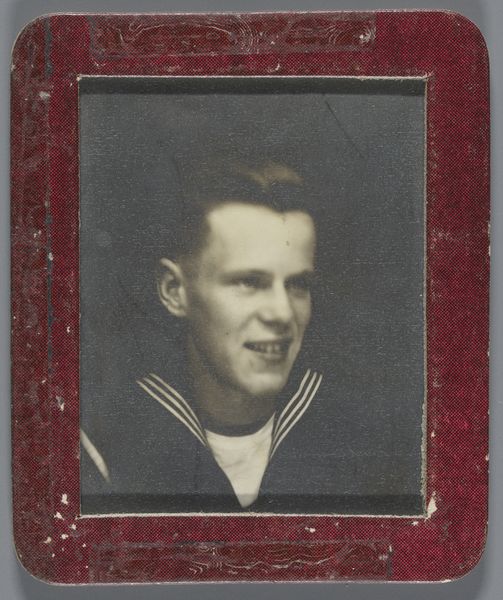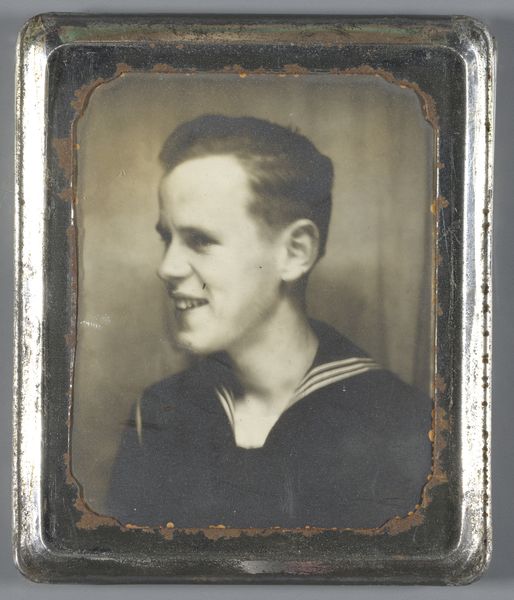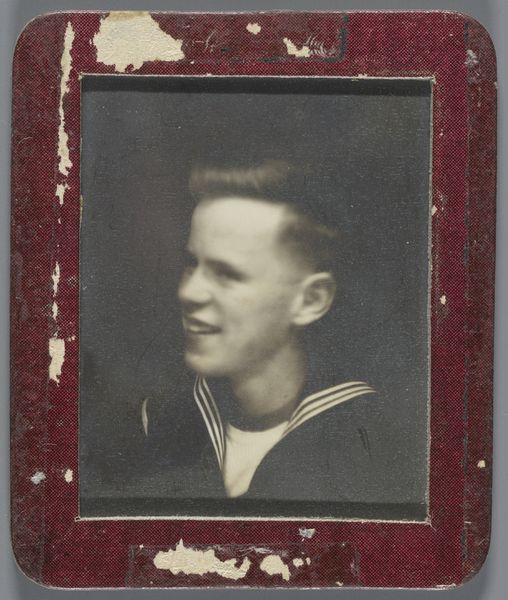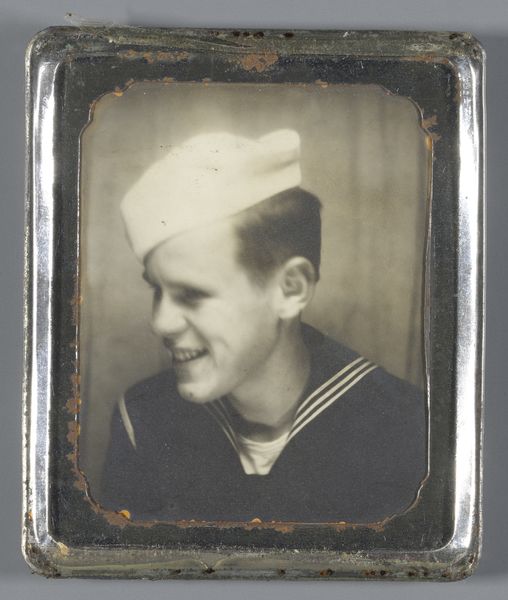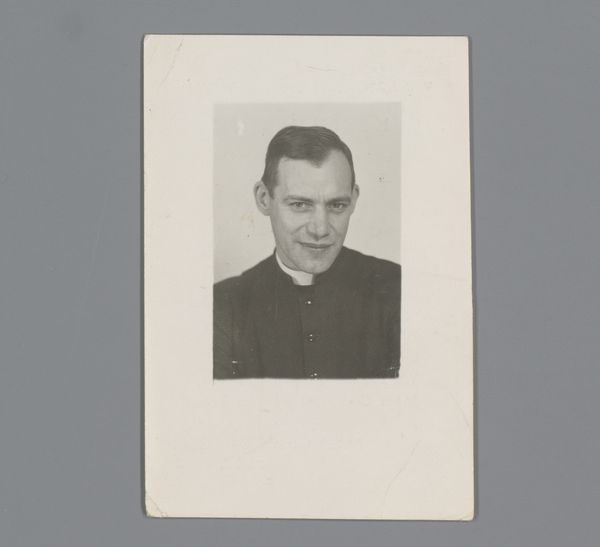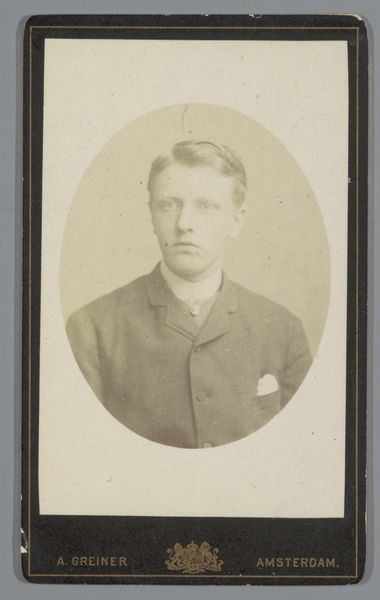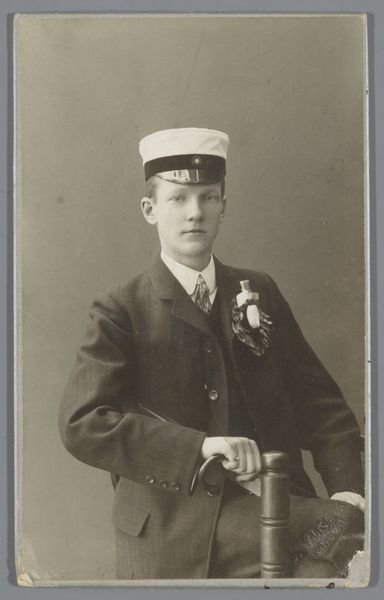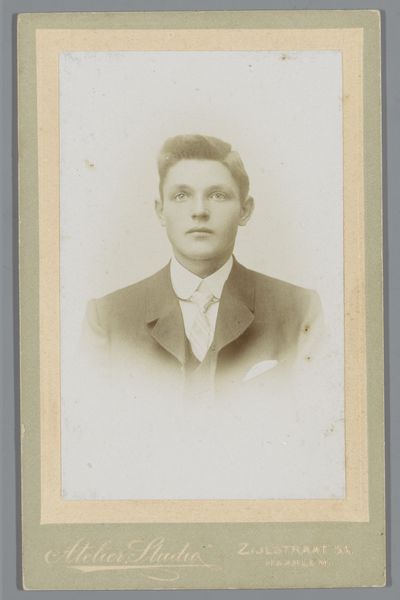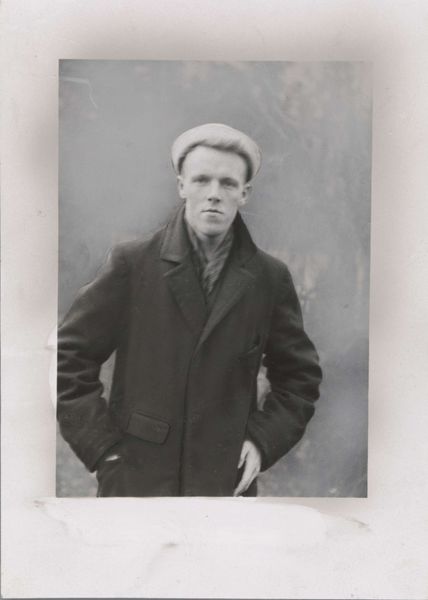
photography, gelatin-silver-print
#
portrait
#
photography
#
gelatin-silver-print
#
modernism
#
realism
Dimensions: height 59 mm, width 46 mm
Copyright: Rijks Museum: Open Domain
Editor: So this is "William Swanson, matroos, 1944," a gelatin-silver print. It has such a direct, almost snapshot quality. What strikes you when you look at this photograph? Curator: The visible signs of age on the photograph and its presentation are significant. Look at the worn frame, the scratches and imperfections. These aren't flaws; they’re evidence of the object's journey through time and handling. Editor: Right, it feels like an artifact more than just a photo. Does that affect how you view the portrait itself? Curator: Absolutely. The imperfections remind us of the social context. Wartime production was streamlined, pragmatic. Gelatin-silver prints, while relatively common, required specific materials and darkroom practices—a whole industry devoted to image making. What was Swanson's relationship to that industry? Did he pay for the portrait himself, or was it part of military documentation? Editor: I hadn't considered that! So, it's less about the artistic intent and more about the physical reality of its creation and place in society. Curator: Exactly. Consider the labor involved, the resources consumed. The image depicts a sailor, yes, but it's equally a product of wartime industry and a reflection of broader social structures and accessible technologies. Editor: So analyzing its material reality and the process helps understand its meaning. It really moves beyond just seeing a face. Curator: Precisely. This tangible record allows us to investigate these details, its relationship with labor, materials, and consumption during a specific time period. Editor: That's given me a completely new perspective on how to appreciate photography. Thanks!
Comments
No comments
Be the first to comment and join the conversation on the ultimate creative platform.

